Shop
A brigandine was typically made of small plates of steel. However, this proved to be a problem as small plates were less able to take a heavy impact than larger ones. Accordingly, the plates were enlarged over time and were made to be a better anatomical fit. A characteristic feature of big-plate brigandines was a
Our Spaulder Cups provide basic and practical protection of the shoulders. Their plain shape provides perfect mobility, and their light weight means that you’ll be protected without being overburdened. Our Spaulder Cups have leather straps and laces in order affix them to your gambeson at just the right place. This is ideal supplementary to your
The Kusnacht Brigandine style is one of the most popular brigandines in full contact medieval combat as well as for reenactment. Our model is based on the historical original from Kusnacht Castle in Switzerland (Armor No. 1, after Thordeman 1939), which was burnt in 1352 (Gessler 1923). cThe two main reasons for the popularity of
A gambeson is armor made of multiple layers of fabric. Often stuffed with (depending on region) tow, wool, horsehair, and sometimes saturated with salt. Depending on its period, the region and class of the wearer, it was considered either as armor, or as under-armor wear. For example, for knights, a padded jacket was not the
This set of steel arms includes elbow cops with rondels and is secured with leather straps and steel buckles. This set provides you excellent mobility for both melées and duels. It is painted on the inside to provide additional protection against rust. Our base option for this set is 1.5mm cold rolled steel which can
Sabatons (German “Eisenschuhe”, French “sollerets”, Italian “scarpe”) were introduced around the end of the XIII century. Before this part of armor was invented, the feet of medieval knights were covered with chainmail stockings. At some point, the front part of the foot was covered by a steel plate, affixed with a leather strap. During the
The bascinet is the most popular European medieval helmet. It has a variety of skull-forms and types of visor and is arguably the most important piece in a set of armor. The Klappvisier was the result of many permutations over the life of the bascinet. Historical sources indicate that beginning in the XIV century all
This model of shoulder protection was inspired by Milanese spaulders – espalderium. Our Segmented Spaulders are smaller than their historical XV century Milanese counterparts. This makes them more comfortable to use. The so-called “wings” of Milanese spaulders were quite big, such that they sometimes overlapped each other at the shoulder blades. This was done with
Our Steel Arms set is made of 1.5mm cold rolled steel (other thickness and material options are available). It provides protection from the wrist to the lower shoulder. With the help of leather belts and steel buckles it’s very comfortable to wear with other parts of armor and can be donned quickly and easily. It’s
The classic Brigandine – hardened plated armor overlayed by a textile outer shell. A symbol of chivalry, the Brigandine was a fashion statement in addition to a warrior’s garb. It was often covered with velvet with matching arms, and was constructed with functional, yet decorative rivets. During the XIII-XIV centuries the brigandine was a typical
Medieval doublet – it’s a garment that was normally worn under the armors. Commonly it was made from flax. But rich knights could afford it be made with the silk lining or velvet outer shell. Sometimes doublet was reinforced with the bands of chainmail: on the sleeves and armpits. Medieval knights used the waxed laces
Leather or fabric with riveted and/or sewed metal plates underneath was an extremely popular form of armor among warriors of the XIV century. Brigandine armor was a precursor to plate armor (often called “white armor”). Due to their lower cost of production and upkeep, brigandine elements were accessible to nearly all medieval knights of Western



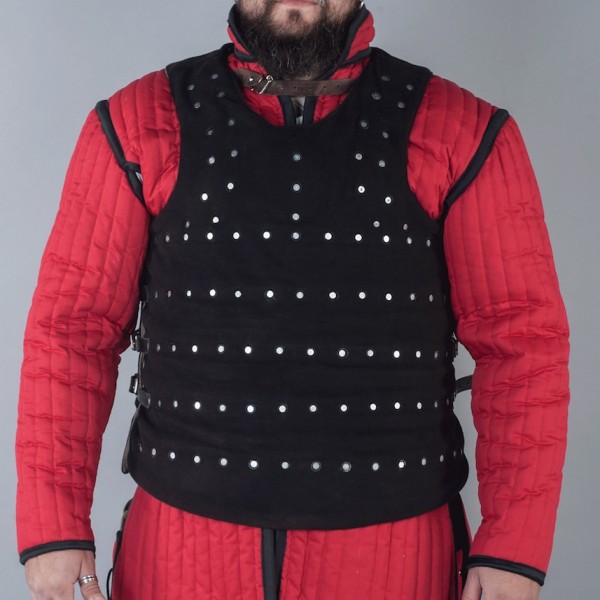

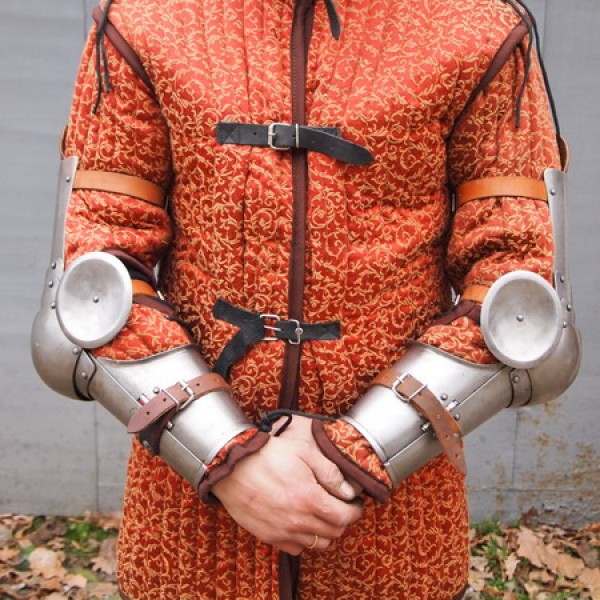
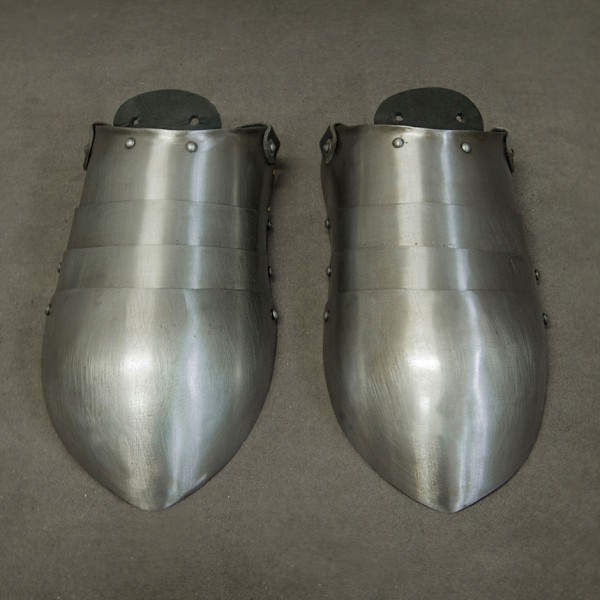
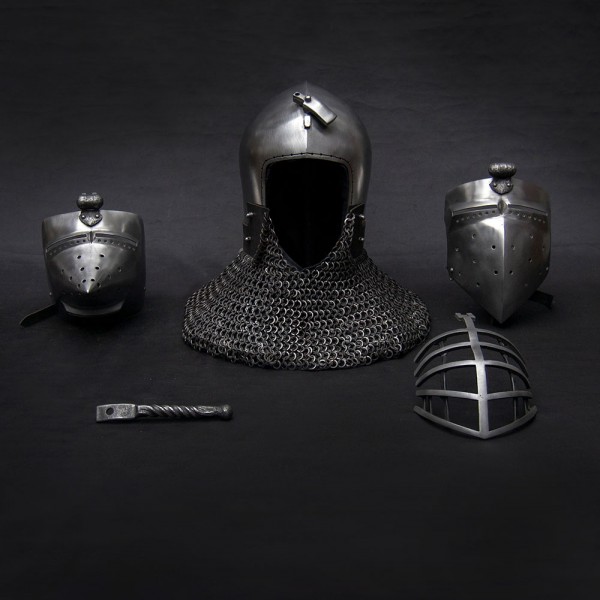
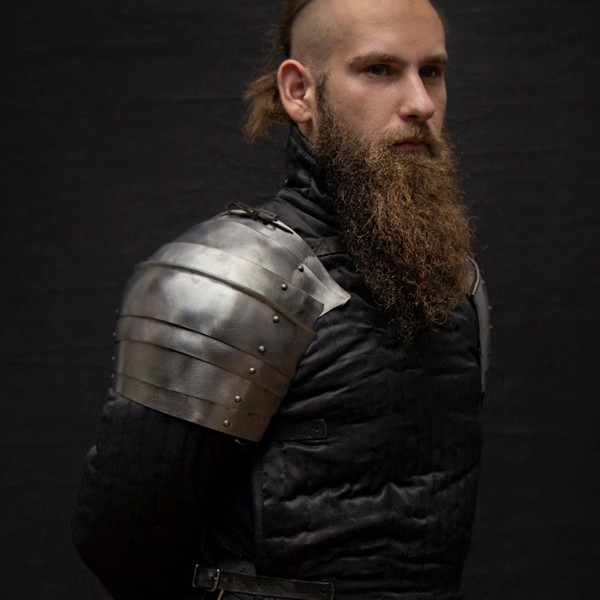

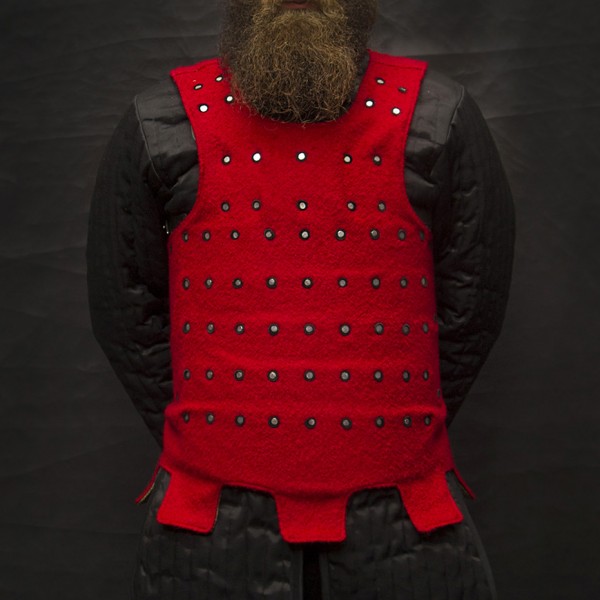
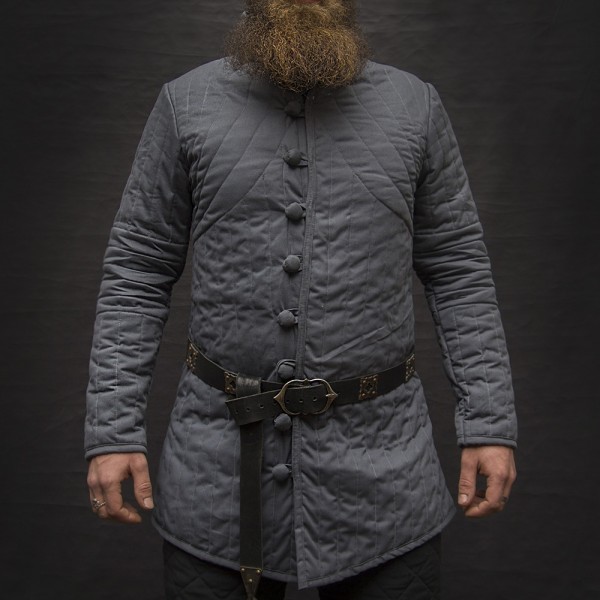
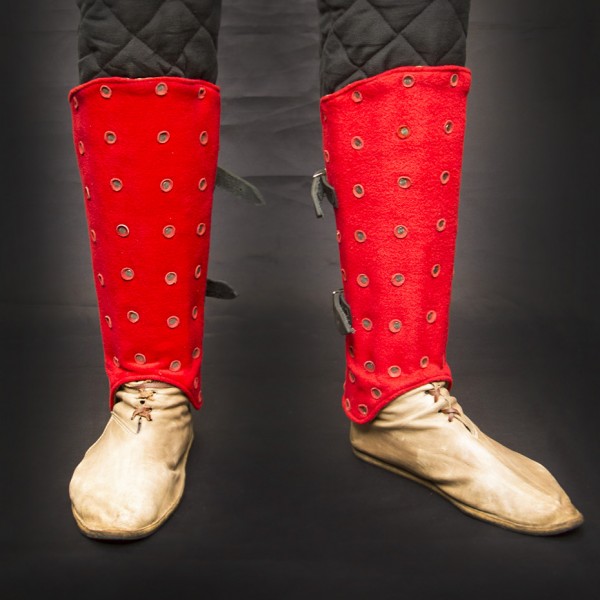
 Shop
Shop